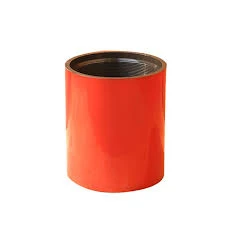- Afrikaans
- Albanian
- Amharic
- Arabic
- Armenian
- Azerbaijani
- Basque
- Belarusian
- Bengali
- Bosnian
- Bulgarian
- Catalan
- Cebuano
- Corsican
- Croatian
- Czech
- Danish
- Dutch
- English
- Esperanto
- Estonian
- Finnish
- French
- Frisian
- Galician
- Georgian
- German
- Greek
- Gujarati
- Haitian Creole
- hausa
- hawaiian
- Hebrew
- Hindi
- Miao
- Hungarian
- Icelandic
- igbo
- Indonesian
- irish
- Italian
- Japanese
- Javanese
- Kannada
- kazakh
- Khmer
- Rwandese
- Korean
- Kurdish
- Kyrgyz
- Lao
- Latin
- Latvian
- Lithuanian
- Luxembourgish
- Macedonian
- Malgashi
- Malay
- Malayalam
- Maltese
- Maori
- Marathi
- Mongolian
- Myanmar
- Nepali
- Norwegian
- Norwegian
- Occitan
- Pashto
- Persian
- Polish
- Portuguese
- Punjabi
- Romanian
- Russian
- Samoan
- Scottish Gaelic
- Serbian
- Sesotho
- Shona
- Sindhi
- Sinhala
- Slovak
- Slovenian
- Somali
- Spanish
- Sundanese
- Swahili
- Swedish
- Tagalog
- Tajik
- Tamil
- Tatar
- Telugu
- Thai
- Turkish
- Turkmen
- Ukrainian
- Urdu
- Uighur
- Uzbek
- Vietnamese
- Welsh
- Bantu
- Yiddish
- Yoruba
- Zulu
Understanding the Importance of Vacuum Hose Connections in Automotive Systems
Understanding Vacuum Hose Couplings A Comprehensive Guide
Vacuum hose couplings are essential components in various industrial and automotive applications. They serve the crucial role of connecting hoses in systems that rely on vacuum pressure to operate efficiently. As we delve into the significance, types, and applications of these couplings, it becomes clear how vital they are in maintaining system integrity and performance.
What is a Vacuum Hose Coupling?
A vacuum hose coupling is a fitting designed to connect two vacuum hoses. These couplings are specialized to ensure a tight seal that prevents air from entering the system, which could compromise the vacuum environment. Their design varies significantly based on the specific application, pressure requirements, and the type of materials being transported.
Types of Vacuum Hose Couplings
There are several types of vacuum hose couplings, each tailored for different purposes
1. Barbed Couplings These couplings feature protruding ridges (or barbs) along the coupling's length. They are designed to hold the hose securely in place once it is pushed onto the barb. Barbed couplings are commonly made of materials such as plastic or metal and are ideal for low-pressure vacuum applications.
2. Quick-Disconnect Couplings These couplings allow for quick engagement and disengagement of hoses without the need for tools. They are particularly useful in applications that require frequent maintenance or changes. Quick-disconnect couplings can include various designs, from simple push-to-connect models to more complex locking mechanisms.
3. Threaded Couplings These are designed with male and female threads that screw together to create a secure connection. Threaded couplings are often used in high-pressure scenarios and can withstand significant stress without leaking, making them suitable for industrial applications.
4. Clamp-on Couplings These involve a hose being placed over a fitting and then secured with a clamp. This design is essential for maintaining a vacuum seal while allowing for some flexibility in the hose orientation.
Material Considerations
The materials used in the construction of vacuum hose couplings significantly impact their performance and durability. Common materials include
- Plastic Lightweight and resistant to corrosion, plastic couplings are suitable for many chemical transfer applications but may not withstand high temperatures or pressures.
vacuum hose coupling

- Aluminum Strong and lightweight, aluminum couplings are ideal for applications requiring a balance of durability and weight.
- Stainless Steel Offering exceptional strength and corrosion resistance, stainless steel couplings are often used in high-pressure environments or where chemical compatibility is a concern.
Applications of Vacuum Hose Couplings
Vacuum hose couplings find their place in a wide array of industries, including
- Automotive Used in fuel systems, emissions control systems, and braking systems, vacuum couplings play a crucial role in ensuring vehicle performance and safety.
- Manufacturing In the manufacturing sector, these couplings are essential for processes involving vacuum packaging, material handling, and filtration systems.
- Medical In medical equipment like suction devices, vacuum couplings ensure that the devices operate effectively without contaminating the vacuum source.
- Food Processing Vacuum couplings are utilized in food packaging and preservation processes, ensuring that products maintain their freshness without exposure to air.
The Importance of Proper Selection and Maintenance
Choosing the right vacuum hose coupling is critical to ensuring system efficiency and longevity. Factors to consider include the size of the hoses, the operating pressure, the type of materials being transported, and environmental conditions. Additionally, regular inspection and maintenance of these couplings are essential to prevent leaks and system failures, which can lead to significant operational downtime and costly repairs.
Conclusion
In conclusion, vacuum hose couplings are pivotal in various applications, ensuring the proper function of systems reliant on vacuum pressure. By understanding their types, materials, and applications, industries can select and maintain these couplings effectively, thus optimizing performance and safety in their operations. Whether in automotive engineering, medical equipment, or food processing, the right vacuum hose coupling plays a vital role in achieving operational success.
-
Tubing Pup Joints: Essential Components for Oil and Gas OperationsNewsJul.10,2025
-
Pup Joints: Essential Components for Reliable Drilling OperationsNewsJul.10,2025
-
Pipe Couplings: Connecting Your World EfficientlyNewsJul.10,2025
-
Mastering Oilfield Operations with Quality Tubing and CasingNewsJul.10,2025
-
High-Quality Casing Couplings for Every NeedNewsJul.10,2025
-
Boost Your Drilling Efficiency with Premium Crossover Tools & Seating NipplesNewsJul.10,2025







